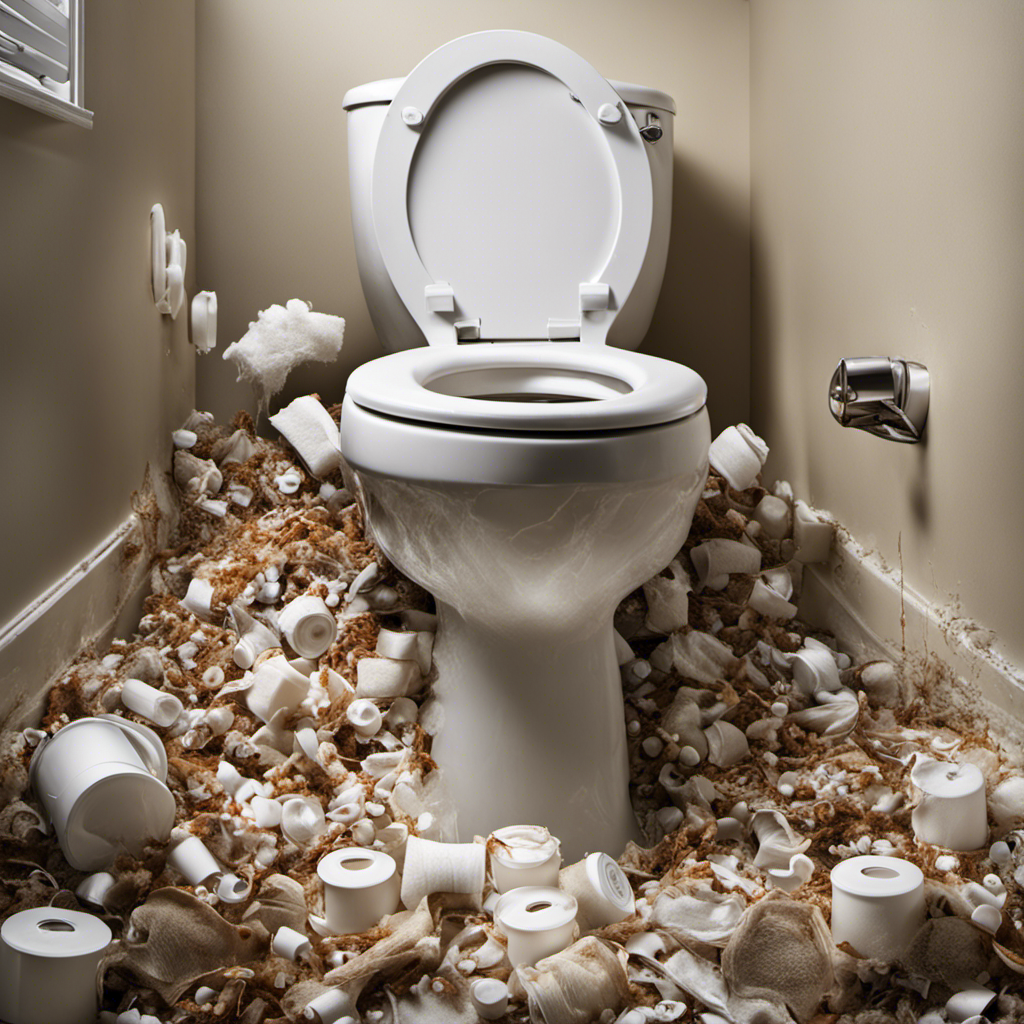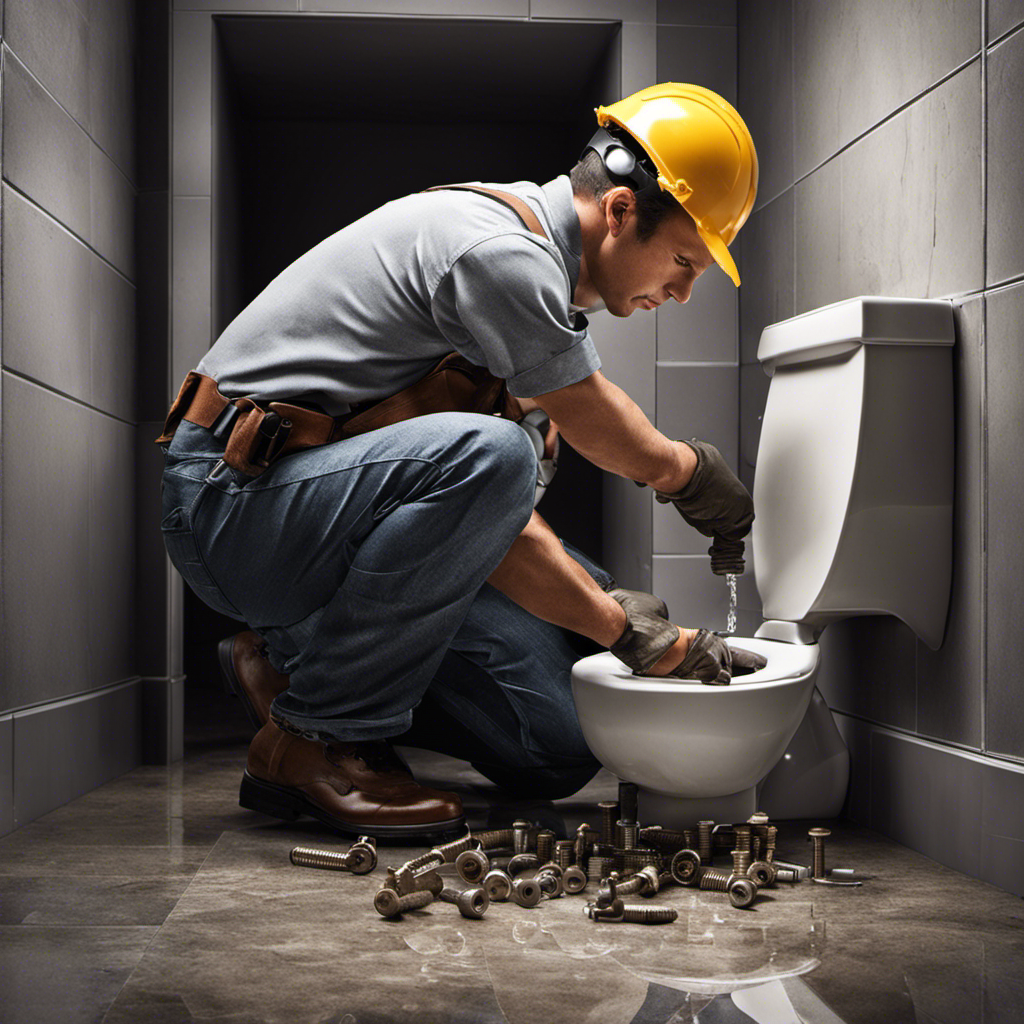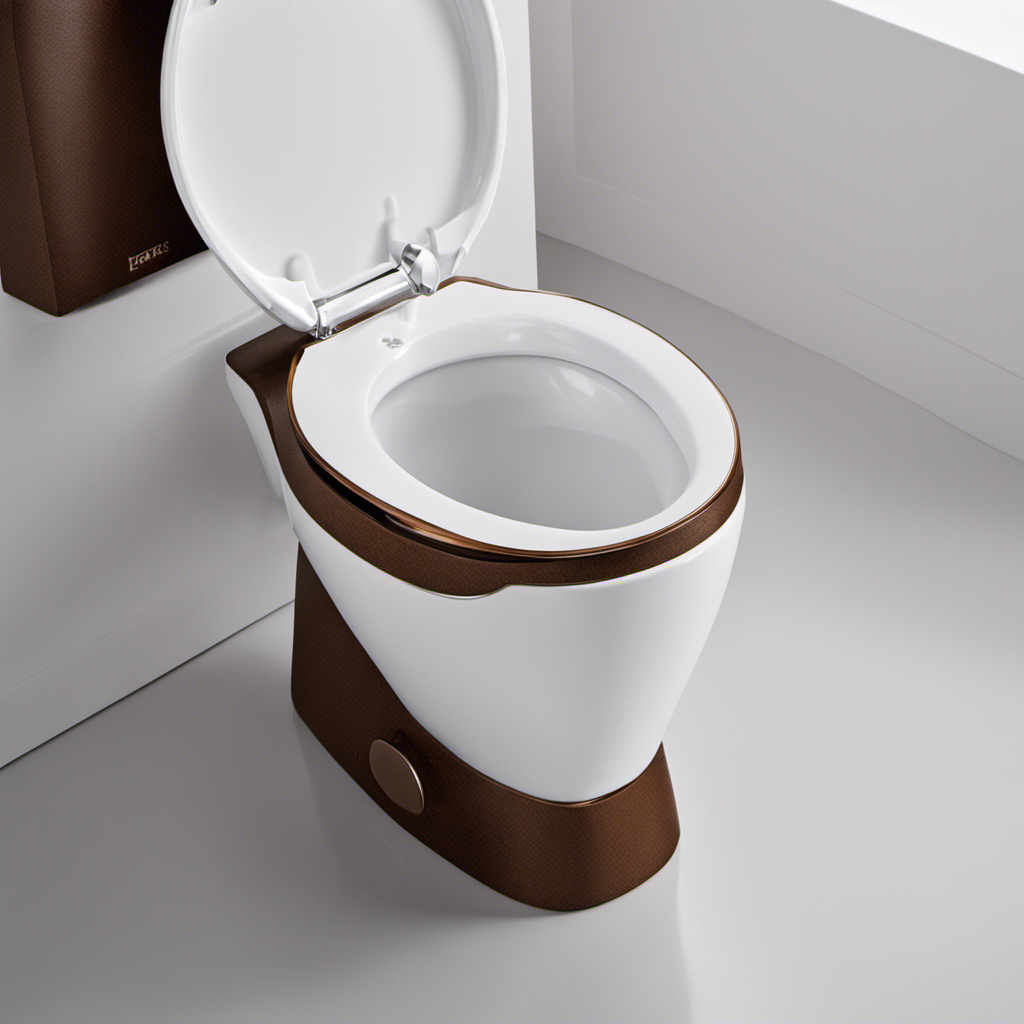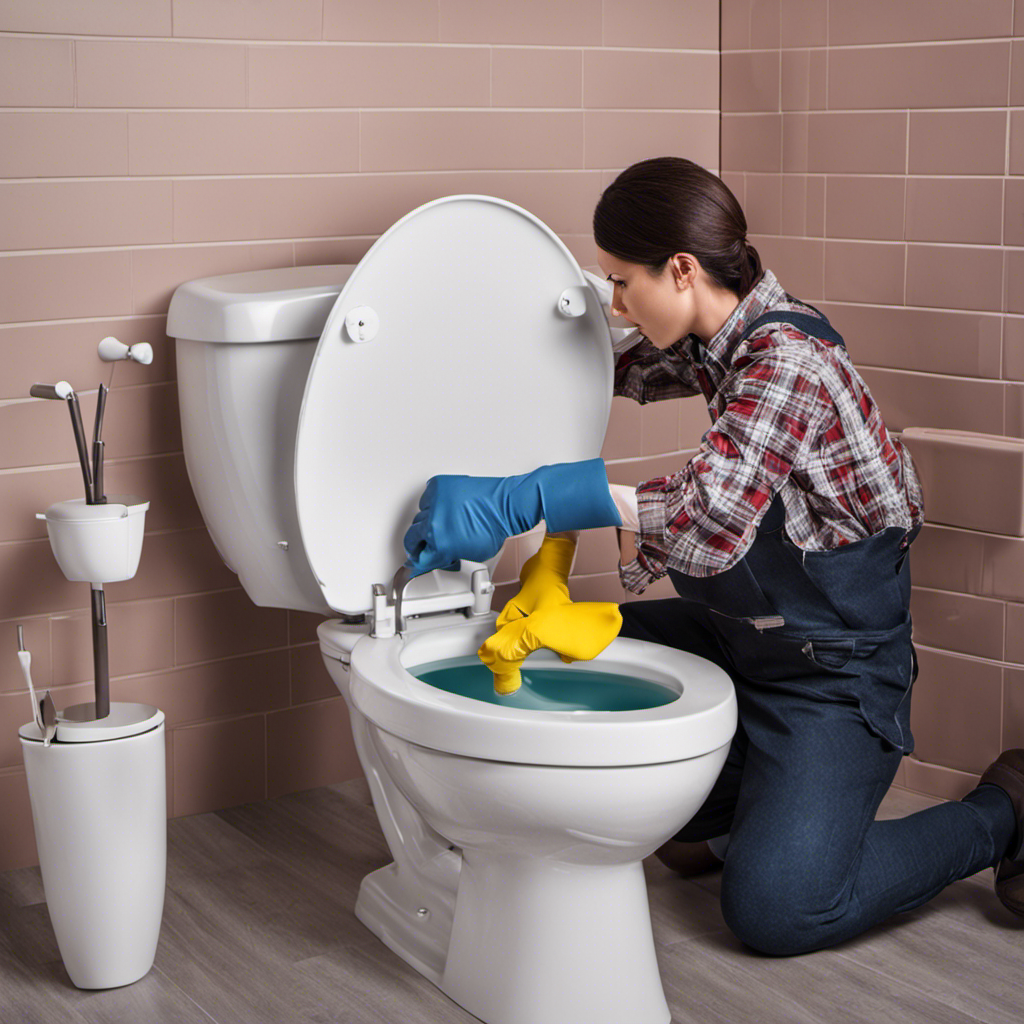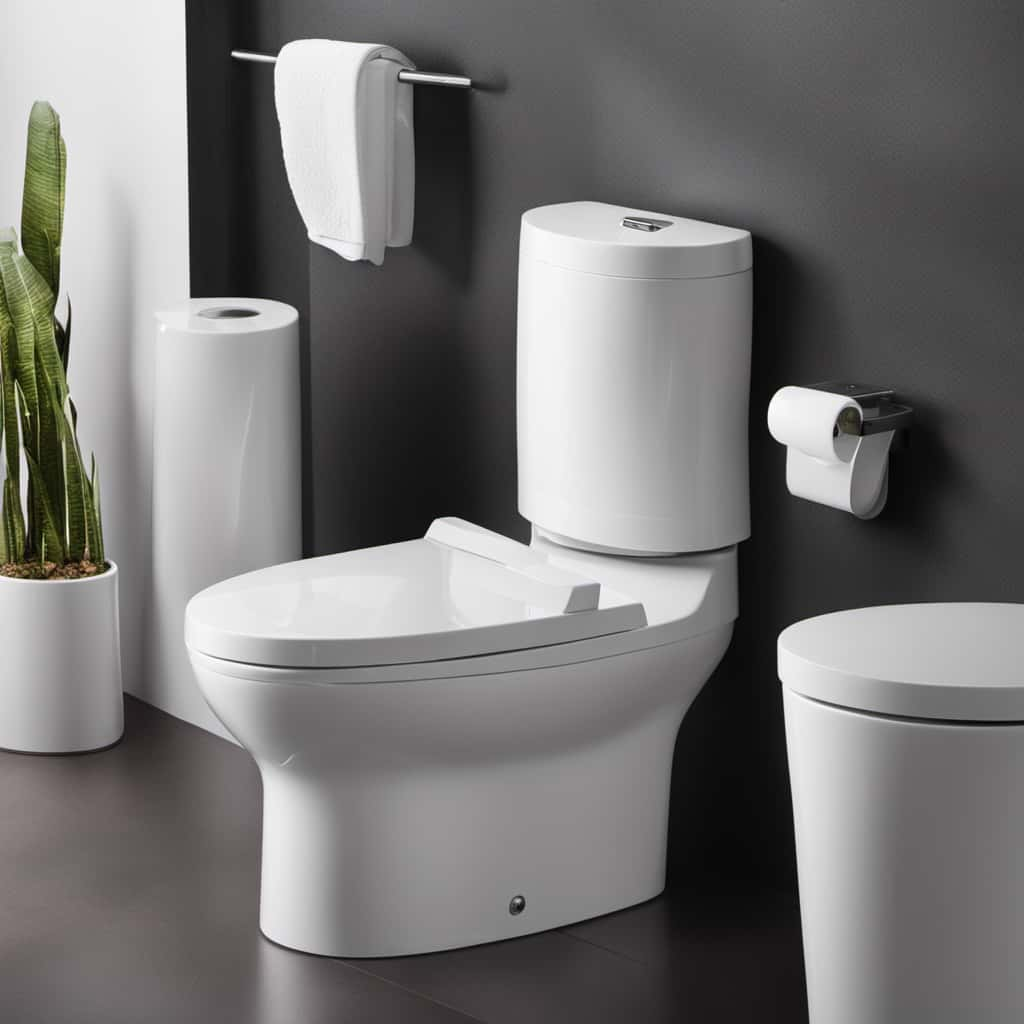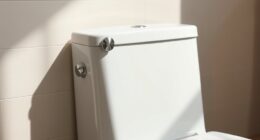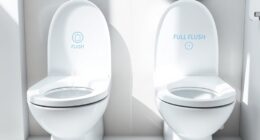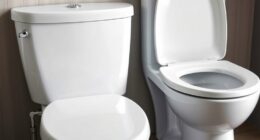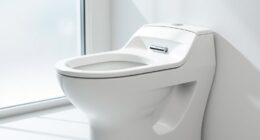I’ve got some eye-opening news for you: flushing non-flushable items down the toilet can lead to disastrous consequences.
In fact, did you know that in the United States alone, over 20% of sewer overflows are caused by these clogs? That’s right, it’s a big problem.
But don’t worry, I’m here to guide you through the risks and provide essential tips to prevent toilet clogs.
So, let’s dive into this informative journey and learn how to keep our toilets clog-free!
Key Takeaways
- Flushing non-flushable items can cause blocked trapways, blocked plumbing vents, main sewer line problems, and damage to low-quality or old toilets.
- Cat litter should not be flushed as it is not eco-friendly, can cause plumbing problems, and can introduce harmful parasites into water treatment plants.
- Hair should not be flushed as it easily snags on pipes, can ball up and pick up other debris, and breaks down very slowly.
- Even flushable wipes should not be flushed as they contain non-decomposing plastic resins, cause issues beyond clogging toilets, and can take hundreds of years to decompose.
The Consequences of Flushing Non-Flushable Items
Flushing non-flushable items can lead to serious consequences, such as plumbing problems and harmful parasites entering water treatment plants.
The economic impact of toilet clogs is significant. Clogged toilets can result in costly repairs, as professional plumbers may need to be called in to unclog the pipes. Additionally, if the clog is severe, it may require replacing the entire toilet, which can be even more expensive.
To prevent these issues, it is crucial to educate others about proper toilet etiquette. This can be done by sharing information on what can and cannot be flushed down the toilet, and the potential consequences of flushing non-flushable items.
Understanding the Risks: Flushing Cat Litter
When it comes to cat litter, it’s important to be aware of the potential risks associated with its disposal. Flushing cat litter down the toilet may seem like a convenient option, but it can lead to several problems. Here are the pros and cons of using flushable cat litter and how to properly dispose of it:
Pros of using flushable cat litter:
- Convenient and easy to dispose of
- Reduces waste in landfills
Cons of using flushable cat litter:
- Some flushable cat litters may not dissolve properly
- Can cause plumbing problems, such as clogs and blockages
- Cat litter is not eco-friendly
To properly dispose of cat litter, it is recommended to bag it and throw it in the trash bin. Avoid flushing it down the toilet to prevent potential plumbing issues and harm to the environment.
Hair and Plumbing: The Hidden Dangers of Flushing
I learned about the hidden dangers of flushing hair and how it can easily cause plumbing clogs. Hair is a common cause of plumbing clogs because it easily snags on rough areas of pipes and can ball up, picking up other debris in the process.
The impact of hair on plumbing systems is significant. Not only does hair break down very slowly, but it can also come from both humans and pets, increasing the risk of clogs. Flushing hair not only poses a risk to your plumbing, but it also has environmental consequences.
When hair clogs pipes, it can lead to costly repairs and potential damage to the sewage system. To prevent these issues, it’s important to dispose of hair properly in the trash bin instead of flushing it down the toilet.
The Truth About Flushable Wipes: Risks and Realities
Using flushable wipes may seem convenient, but it’s important to understand the risks and realities associated with them.
- Flushable wipes: Are they really flushable?
- The environmental impact of flushing non-flushable items.
While flushable wipes are marketed as safe to flush, the truth is that they can still cause significant problems in plumbing systems and the environment. Here are some key points to consider:
-
Non-decomposing plastic resins: Most wipes, including those labeled as ‘flushable,’ contain plastic resins that do not break down easily.
-
Beyond clogging toilets: Flushable wipes can cause issues beyond clogging toilets. They can accumulate in sewer systems, leading to blockages and expensive repairs.
-
Long decomposition time: Even so-called flushable wipes can take a long time to decompose. For example, Pampers wipes can take up to 500 years to break down.
-
Environmental impact: Flushing non-flushable items like wipes contributes to the pollution of water bodies and can harm aquatic life.
-
Safer alternatives: To avoid these risks, it’s best to dispose of wipes in the trash bin instead of flushing them.
Pills and Plumbing: Why Flushing Medication Is a Bad Idea
Medication should never be flushed down the toilet due to the negative impact it can have on fish behavior in rivers. Flushing pills can lead to the contamination of water bodies and disrupt the natural ecosystem.
It is crucial to find proper medication disposal methods to prevent environmental damage. One effective method is participating in medication take-back programs offered by pharmacies. These programs allow individuals to safely and responsibly dispose of their unused or expired medications.
Additionally, it is important to scratch out any identifying information from pill bottles before disposing of them. By following these medication disposal methods, we can avoid the harmful consequences of flushing pills and protect our rivers and aquatic life from the detrimental effects of medication pollution.
Frequently Asked Questions
Can Flushing Non-Flushable Items Lead to Sewage Backups in the Home?
Flushing non-flushable items can indeed lead to sewage backups in the home. It can cause blockages in the sewage system, leading to plumbing issues and potential damage. It’s important to avoid flushing anything other than toilet paper to prevent such problems.
What Are the Potential Environmental Impacts of Flushing Non-Flushable Items?
Flushing non-flushable items like wipes and medication can have serious consequences. It’s like throwing a wrench into the gears of a well-oiled machine. The potential health risks and impact on wastewater treatment facilities are significant.
Are There Any Alternatives to Flushing Non-Flushable Items?
There are alternatives to flushing non-flushable items. Eco-friendly disposal methods include throwing them in the trash, using designated recycling programs, or utilizing composting systems for biodegradable materials.
What Are the Consequences of Flushing Non-Flushable Items in Terms of Plumbing Repairs and Costs?
Flushing non-flushable items can lead to significant plumbing risks and financial implications. It can cause clogs, blockages, and damage to pipes, resulting in expensive repairs. Properly disposing of these items is essential to avoid these costly consequences.
How Can Individuals Properly Dispose of Non-Flushable Items to Prevent Clogs and Environmental Harm?
To properly dispose of non-flushable items and prevent clogs and environmental harm, it is important to practice proper waste management. This includes using trash bins for items like wipes, feminine hygiene products, paper towels, medication, and hair. Environmental responsibility starts with proper disposal.
Conclusion
In conclusion, flushing non-flushable items down the toilet can lead to serious consequences. The risks are real, from clogged trapways to damaged plumbing vents and main sewer lines.
Cat litter, hair, wipes, pills, and paper towels may seem harmless, but they can cause major plumbing problems and harm water treatment plants. These materials also decompose slowly, adding to the long-term environmental impact.
By following proper toilet etiquette, conducting regular maintenance, and staying informed, we can prevent unnecessary clogs and protect our plumbing systems.
Don’t let coincidence be the reason for a costly and inconvenient toilet clog.
